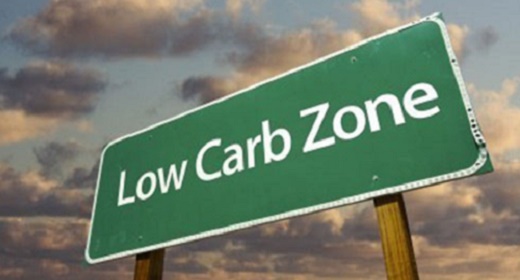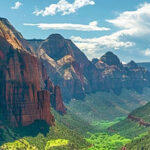The world’s love affair with America’s Wild West has always burned bright, and nothing in the country’s history compares to the period from 1865 to 1895…
when prospectors and pioneers pushed their way towards better lives and scrambled for pots of gold. We travel to these former frontier boomtowns, most of which still embrace their Wild West past (gun-slinging cowboys, dastardly outlaws, swinging saloon doors, one-room jailhouses, liquor-fuelled shootouts over hands of poker) and show America as it once was.

#10
Oatman, Arizona
Claim to fame: Named for Illinois-born Olive Oatman who was kidnapped for slavery by an Apache tribe and then sold to Mohave Indians (she was eventually set free and became a celebrity), this small mining camp had all the markings of a gold rush boomtown. For a decade, the Oatman mines were among the largest gold producers in America’s West, but in later years the place become another tourist town for visitors passing through the ancient part of Route 66. Nowadays, it’s packed with wild burros (an old Spanish term for donkeys) who roam the streets waiting for their burro chow (hay cubes), which can be purchased in the town. Oatman is also proud of its Hollywood connections; the Oscar-winning How the West Was Won was filmed here and it’s also where Clark Gable and Carol Lombard reportedly spent their wedding night in 1939 (the refurbed honeymoon suite at the Oatman Hotel is one of the town’s key attractions).
See and do: Check out the Gable/Lombard Room at the Oatman Hotel (it no longer takes guests, but functions as a restaurant and museum), stroll along the town’s wooden sidewalks, browse in the kitsch Americana shops, take selfies with the impossibly cute burros, and visit the Oatman Jail and Museum to see its holding pens and sheriff’s office. Don’t miss the Ghostrider Gunfighters spectacular Wild West shootouts and comedy performances taking place daily in the middle of town at 1:30pm and 3:30pm (for $100 you can even stage your shotgun wedding here).

#9
Amarillo, Texas
Claim to fame: The quintessential land of cowboys and cattle situated at the crossroads of America, Amarillo was established in 1887 when Abilene developer J.I. Berry selected this well-watered spot along the way of the Fort Worth and Denver City Railroad (FW&DC). Known as Oneida (this later changed to Amarillo – Spanish for yellow – for the colour of the soil on the banks of the nearby Amarillo Creek), it grew from a 500-strong tent camp for railroad workers to a hard-nosed cattle town complete with big skies, big steaks, big barbeque joints, and big quantities of oil. It now hosts a number of famous rodeos (including the Coors Cowboy Club Ranch Rodeo, Working Ranch Cowboy Association, and World Championship Ranch Rodeo), as well as the annual Polk Street Cattle Drive where the streets of downtown Amarillo are filled with around 60 Texas longhorns making their way to the Tri-State Fairgrounds.
See and do: Watch a performance of the outdoor musical drama TEXAS at the Pioneer Amphitheatre in the nearby Palo Duro Canyon State Park (it’s been performed here virtually every year since 1966), spend time at the American Quarter Horse Hall of Fame & Museum to learn about this incredible breed, and watch the dance troupe perform at the Kwahadi Museum of the American Indian. Also try to sneak in a visit to the Big Texan Steak Ranch for a 72-ounce steak – it is free-of-charge if you manage to finish the whole thing (including the sides) in an hour.

#8
Tombstone, Arizona
Claim to fame: Nicknamed “The Town Too Tough To Die”, the entire town of Tombstone was awarded National Historic Landmark District status in 1961 for being “one of the best preserved specimens of the rugged frontier of the 1870’s and 1880’s”. Founded by prospector Ed Schieffelin who discovered a wealth of silver in this area in 1877 (he was warned that he would find nothing here other than his own tombstone), the town was the setting of the Wild West’s most notorious events – the Gunfight at the O.K. Corral. This 30-second shootout on 26 October 1881 pitted the Earp brothers (Wyatt, Virgil, Morgan) and their sharp-shooting sidekick Doc Holliday against Billy Claiborne, Ike and Billy Clanton, and Tom and Frank McLaury. Though only 30 shots were fired in total, Billy Clanton and the McLaury brothers were dead, and Virgil and Morgan Earp and Doc Holliday were wounded (Ike Clanton and Claiborne had run for the hills).
See and do: Check out St. Paul’s Episcopal Church, the Rose Tree Museum & Bookstore, and the Tombstone Epitaph building in the historic area bounded by Fremont, 6th, Toughnut, and 3rd Streets, visit the 1882 Tombstone Courthouse State Historic Park, and take a guided tour of the Bird Cage Theatre – a drinking-gambling-performance venue that operated from 1881 to 1889. Other essential stops include the O.K. Corral for its re-enactments of the West’s most famous shootout, and the Old Tombstone Wild West Theme Park for its daily gunfight shows.

#7
Dodge City, Kansas
Claim to fame: Founded in June 1872, just three months before the arrival of the Santa Fe Railroad, the Queen of the Cowtowns (named for the herds of longhorns that were shipped west) was patrolled by the likes of Wyatt Earp, Bat Masterson, and gone-to-seed dentist John Henry “Doc” Holliday. Attracting an alarmingly high number of gunfighters and brothel-owners (the phrase “Get the heck out of Dodge” was coined for good reason), its reputation for being the wickedest town in the Old West later made it great fodder for Hollywood’s filmmakers. Nowadays, this formerly lawless place is less about shootouts and ladies of the night and more about meatpacking (it is home to not one but two large beef processing plants). It also famously hosts the 10-day annual festival Dodge City Days where the highlight is a longhorn cattle drive down Wyatt Earp Boulevard to kick off the Dodge City Roundup Rodeo.
See and do: Take the Historic Trolley tour to visit the original locations of the Longbranch Saloon, Gospel Hill, and the “Deadline”, take a stroll along the Dodge City Trail of Fame in the National Historic District, and visit the legendary Boot Hill Museum to experience the recreated Front Street, circa 1876. Further highlights include swigging a real Sarsaparilla at Miss Kitty’s Long Branch Saloon, admiring the remnants of 1865 Fort Dodge (five miles east of the city), and spotting the wagon tracks that are still in existence on the 19th century Santa Fe Trail.

#6
Virginia City, Nevada
Claim to fame: As one of the largest and most iconic mining magnets between Denver and San Francisco (much of the latter was built with the treasure dug up from the soil here), Virginia City sprang up as a boomtown in 1859 during the discovery of Comstock Lode – the first major silver deposit discovery in the United States. Named by Virginian miner James “Old Virginny” Finney (rumour has it that he got drunk, smashed his bottle of whiskey, and used the remains to baptise the ground after his home state), the town peaked during the 1860’s – and remained a stronghold for silver and gold barons until 1878 when things were pretty much over. Nowadays, what was once nicknamed “Queen of the Comstock” feels rather like a frontier theme park complete with historic saloons, wooden boardwalks, restored 19th century buildings, and 850 residents who are mighty proud of their town which was “the richest place on earth” in its heyday.
See and do: Take the Trolley Tour for the lowdown on the major landmarks, spend the afternoon museum-hopping (there’s 17 in total, including the Way It Was Museum for lessons in mining, milling and blacksmithing), and ride on the Virginia & Truckee Railroad from Virginia City to Gold Hill. Also be sure to stop for a drink at Ponderosa Saloon – a beloved watering that has a walk-in 1964 bank vault as well as an abandoned gold mine beneath its bar (the 25-minute tour that guides you through the shaft has been one of the town’s biggest draws since the 1900’s).

#5
Santa Fe, New Mexico
Claim to fame: Surrounded by the Sangre de Cristo Mountains, Santa Fe is the third-oldest permanent European settlement west of the Mississippi. Established in 1608 by the Spanish who came up from the south, the city has long served as the capital of the Kingdom of New Mexico, the Mexican province of Nuevo Mejico, the American territory of New Mexico (which contained what is today Arizona and New Mexico) and, since 1912, the state of New Mexico. Now a designated UNESCO Creative City for its flourishing arts scene, it has earned its place in history as somewhere where northern traders and trappers could trade with the southern Mexican Indians, and where western silver could be exchanged for artisanal products and local turquoise. It was also where outlaw and federal fugitive Billy the Kid spent his teen years (he was famously captured by Sheriff Pat Garrett in 1880 and locked up in the old Santa Fe jail).
See and do: Spend time at the Museum of International Folk Art, The Wheelwright Museum of the American Indian, and the Museum of Indian Art and Culture, and swoon over the amazing art installations at Meow Wolf – an arts collective part-funded by Game of Thrones author and Santa Fe resident George R.R. Martin. Don’t miss the San Miguel Mission, the Loretto Chapel, and the nearly 400-year-old Santa Fe Plaza – a National Historic Landmark most famous for its Indian and Spanish markets and lovely central park lined with grass, trees, and benches.

#4
Deadwood, South Dakota
Claim to fame: The discovery of riches in the southern Black Hills in 1874 kicked off one of the greatest gold rushes in America. Two years later, a slew of fortune-seekers made their move on this gulch of dead trees, turning Deadwood into a rough-and-ready boomtown that steadily lured bands of outlaws, gamblers, and gunslingers. Most famously, it was the stomping ground of the trigger-happy Calamity Jane, Potato Creek Johnny, Seth Bullock, and Wild Bill Hickok (who was shot in the back by Jack McCall while holding a poker hand of aces and eights, known thereafter as the Dead Man’s Hand) – all of whom were celebrated in the far-from-fictional HBO series Deadwood. Nowadays, this charming town (a National Historic Landmark since 1961) keeps its loud and lusty heritage alive with a wealth of Wild West-inspired attractions; from museums and parades to lively Vegas-style casinos (gambling was eventually legalised here in 1989).
See and do: Pay your respects to Wild Bill Hickok and Calamity Jane at Mount Moriah Cemetery (they are buried next to each other), check out historical artifacts at the Queen Anne-style Adams Museum, pan for gold at the Lost Boot Mine, and marvel at the wagons, stagecoaches and carriages at the Days of 76 Museum. Don’t leave without watching the daily shootouts on Main Street, attending the nightly trial of Jack McCall at the Masonic Temple, and nursing a whiskey or two at the rowdy Saloon #10, in sight of the (replica) chair Hickok sat in on the night he died.

#3
Bandera, Texas
Claim to fame: Deserving of its “Cowboy Capital of the World” moniker, this Texas Hill Country site that hosted many a bloody battle between Apache and Comanche Indians and the Spanish Conquistadors was named for its red bandera (meaning banner or flag) that was flown to define the boundary between hunting grounds. Most famous as the staging area for the last great cattle drives of the late 1800’s, life here is as much about the cowboy heritage (honky-tonks, chuck wagon dinners, saloons, dude ranches) as the 120-mile Medina River that thread through the town and into the backcountry. And then, of course, there’s the annual festivals that keep the spirit of the Wild West alive, including the Cowboy Mardi Gras, Wild Hog Explosion, Spring Fling, Bandera ProRodeo, Cowboy Capital Christmas NIGHT Parade, and Mayhem on the Medina.
See and do: Spend time at a dude ranch, marvel at 40,000-plus Wild West relics at the Frontier Times Museum, take a walking tour to see the original jail and county courthouse, wander along historic Eleventh Street, and visit the St. Stanislaus Catholic Church (the second-oldest Polish Catholic Church in the USA). Equally visit-worthy is the Lone Star Motorcycle Museum, the Town Mountain Miniatures Museum, and Polly’s Chapel – the picturesque church hand-built in 1882 by Mexican-born scout turned minister Jose Policarpio ”Polly” Rodriguez.

#2
Silverton, Colorado
Claim to fame: At an elevation of 9,180-feet in the heart of the Million Dollar Highway, and nestled between two rugged San Juan Mountain passes, Colorado‘s so-called “Mining Town That Never Quit” grew tenfold following 1873’s Brunot Treaty that gave up more than four million acres of the San Juan Mountains (it was previously held as a Ute reservation). As more settlers flooded into Silverton spurred by the promise of riches around the rivers and creeks, it became a hub for the many small towns accumulating around the biggest mines: Gladstone, Eureka, Animas Forks, Howardsville, Red Mountain, Chattanooga, and more. During this time, it was as famous for its “Notorious Blair Street” (the four-block seedy red light district lined with a vast number of dance halls, saloons, and bordellos) as for its Durango & Silverton Narrow Gauge Railroad – the narrow-gauge railroad laid in 1882 that travels over 45 miles of track between Silverton and Durango.
See and do: Board the northern terminus on the Durango & Silverton Narrow Gauge Railroad tour, visit the San Juan County Historical Society Mining Heritage Centre housed in the old Silverton jail, and hang out in the lobby of the Victorian-era Grand Imperial. An absolute must is the Old Hundred Gold Mine Tour – a one-hour guided tour where you’ll get ride an electric mine train one-third of a mile deep into the heart of the Galena Mountain and also watch mining demos using air-powered drills, slushers, and mucking machines dating as far back as the 1930’s.

#1
Cody, Wyoming
Claim to fame: Much more than just a gateway for Yellowstone National Park, this self-proclaimed “Rodeo Capital of the World” was named in honour of William Frederick Cody – the charismatic American showman known by local folk as Buffalo Bill (or sometimes The Colonel). Anyone wanting to get to grips with the buckaroo spirit of the Wild West will be rewarded with a dizzying amount of attractions that serve as a reminder of the town’s past; not least in the downtown area that teems with cowboy apparel shops, atmospheric saloons, and wallet-friendly steakhouses. It’s also home to the Old Trail Town – an awesome collection of artifacts such as the grave of mountain man John Johnson, the original cabins used by Wild West outlaws Butch Cassidy and the Sundance Kid, a saloon frequented by the Hole-in-the-Wall Gang, and the home of Curley – the Crow Indian scout who famously survived the Battle of the Little Big Horn.
See and do: Visit the giant Buffalo Bill Centre of the West for its five themed museums (Buffalo Bill Museum, Plains Indians Museum, Whitney Western Art Museum, Draper Natural History Museum, and Cody Firearms Museum), book a ranch tour to learn how to safely shoot a rifle, and take a drive on Buffalo Bill Scenic Byway – the road connecting Cody to Yellowstone’s east entrance. If you’re here between June and August, the nightly Cody Nite Rodeo is a must-do for its bucking broncos, lasso-swinging cowboys, fearless horse riders, and audience sing-a-longs.











































